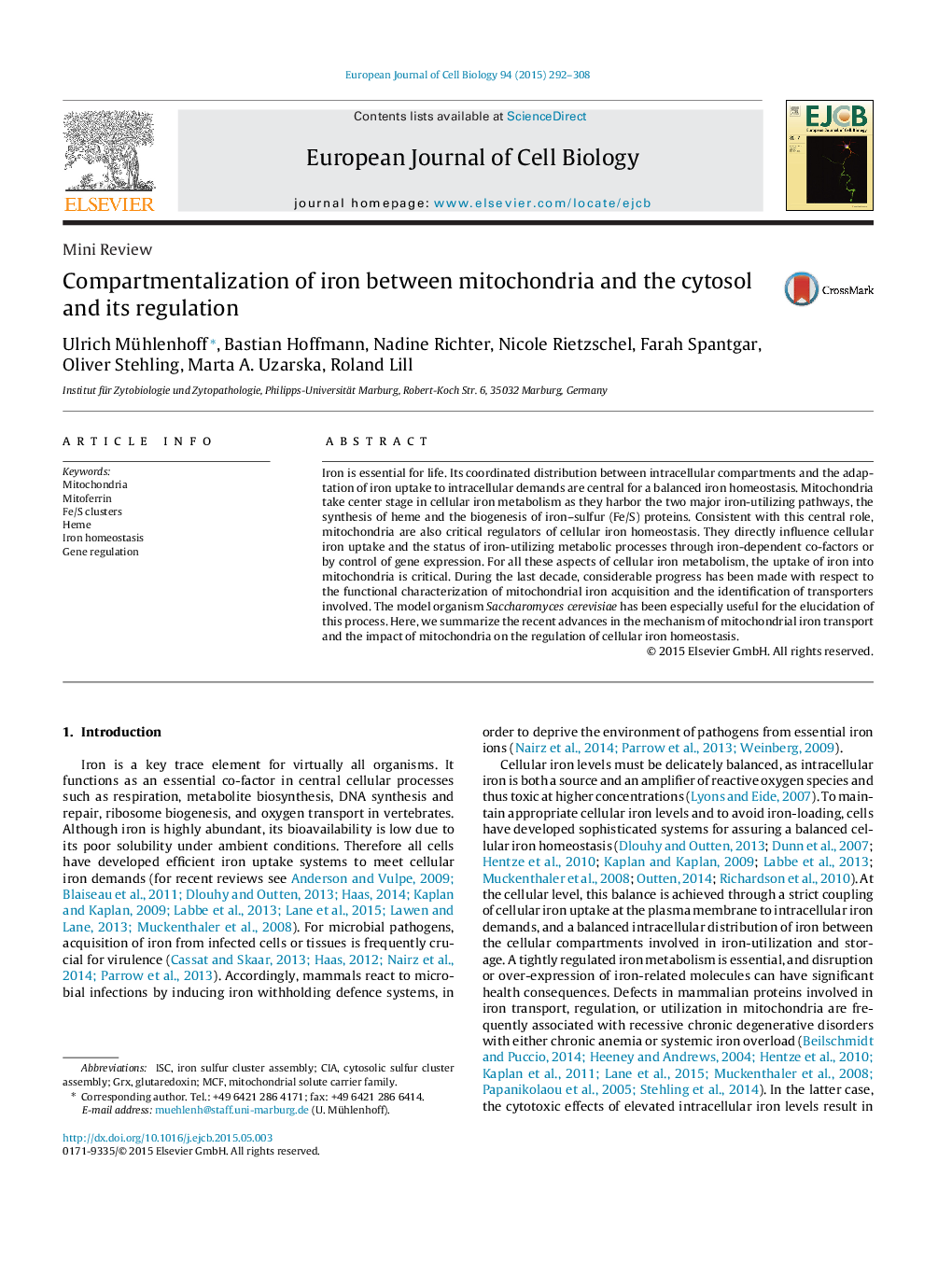| Article ID | Journal | Published Year | Pages | File Type |
|---|---|---|---|---|
| 2178354 | European Journal of Cell Biology | 2015 | 17 Pages |
Iron is essential for life. Its coordinated distribution between intracellular compartments and the adaptation of iron uptake to intracellular demands are central for a balanced iron homeostasis. Mitochondria take center stage in cellular iron metabolism as they harbor the two major iron-utilizing pathways, the synthesis of heme and the biogenesis of iron–sulfur (Fe/S) proteins. Consistent with this central role, mitochondria are also critical regulators of cellular iron homeostasis. They directly influence cellular iron uptake and the status of iron-utilizing metabolic processes through iron-dependent co-factors or by control of gene expression. For all these aspects of cellular iron metabolism, the uptake of iron into mitochondria is critical. During the last decade, considerable progress has been made with respect to the functional characterization of mitochondrial iron acquisition and the identification of transporters involved. The model organism Saccharomyces cerevisiae has been especially useful for the elucidation of this process. Here, we summarize the recent advances in the mechanism of mitochondrial iron transport and the impact of mitochondria on the regulation of cellular iron homeostasis.
Graphical abstractFigure optionsDownload full-size imageDownload as PowerPoint slide
